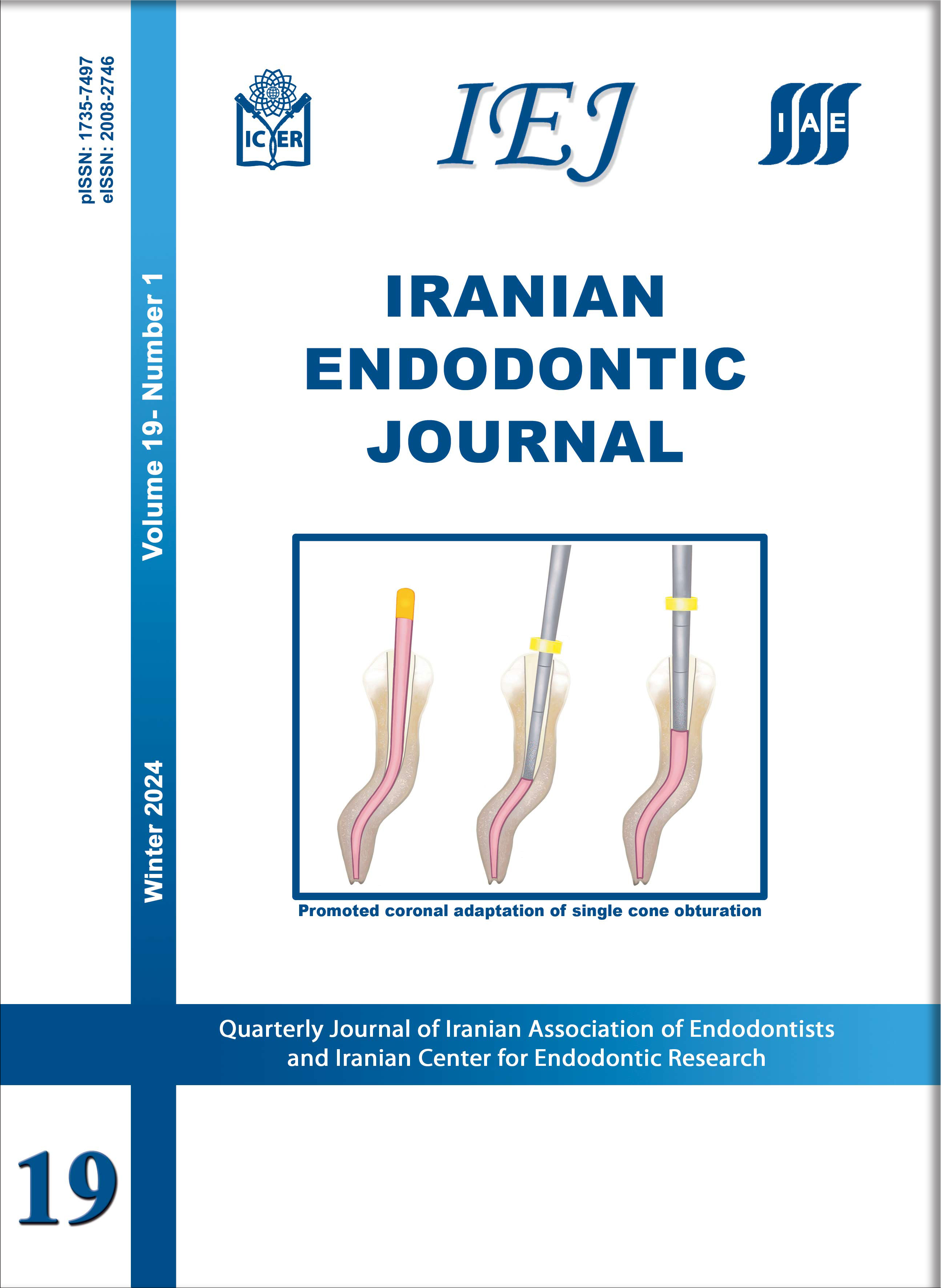An Overview on a Promising Root Canal Irrigation Solution: QMix
Iranian Endodontic Journal,
Vol. 16 No. 2 (2021),
16 March 2021,
Page 71-77
https://doi.org/10.22037/iej.v16i2.27912
Due to the complex micro-anatomy of the root canal system, mechanical instrumentation leaves significant portions of the root canal walls untouched; therefore, complete elimination of bacteria from the root canal by cleaning with instrumentation alone is unlikely. It has long been postulated but not demonstrated, that any pulp tissue left in the root canals can serve as bacterial/fungal/viral (microorganism nutrients) nutrients. Furthermore, tissue remnants also impede the antimicrobial effects of root canal irrigants and medicaments and prevent intimate adaptation of the root canal filling to the dentin. Therefore, specific irrigation/disinfection procedures are necessary to remove tissue from the root canals and to kill microorganisms, respectively. The purpose of this paper was to review different aspects of a promising root canal irrigant; QMix. This is a relatively new root canal irrigant composed of traditional materials like chlorhexidine (CHX), ethylele diamine tetraacetic acid (EDTA), saline and a detergent. QMix is antibacterial, antifungal and has antibiofilm activities, it displays substantivity, smear layer removing ability; moreover, its effect on dentin and retention of fiber posts etc. has been reviewed. There have been strong reports that show the chemical design of QMix prevents precipitation of CHX when together with EDTA and mixing with sodium hypochlorite does not produce the orange-brown precipitate. Furthermore, the smear layer removal ability of QMix is comparable to that of 17% EDTA and the antibacterial activity of QMix was greater than 1% and 2% sodium hypochlorite (NaOCl) and 2% CHX.




